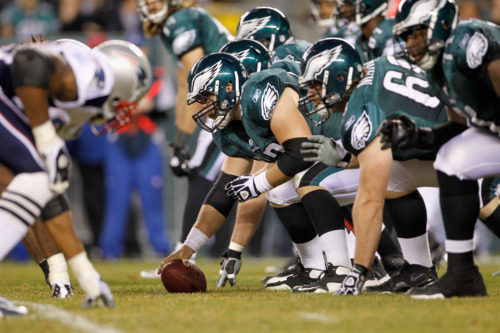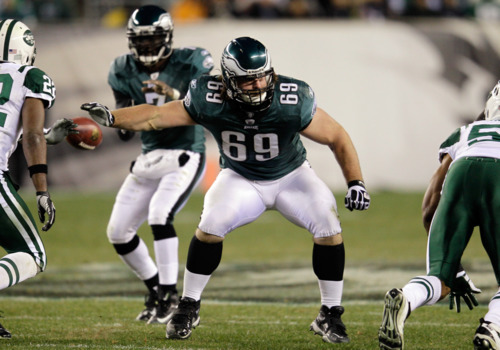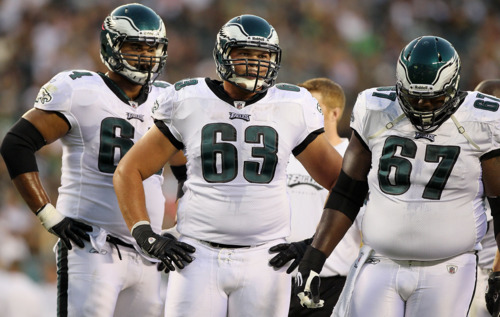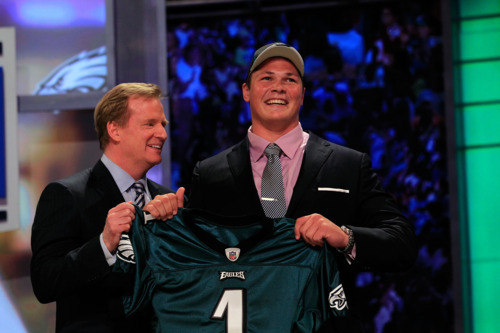
We’d all love for the Eagles to have one of those dominant offensive lines, one that knocks defenses back all game. But to some degree, offensive linemen are judged more by their mistakes than their positive plays.
To that end, I put together the following charts of “negative plays” by offensive lineman, according to the stats guys at Pro Football Focus. I calculated a negative play to be a penalty, sack, hit, or pressure. Obviously these individually are not equal. A sack is far worse than a simple pressure. But overall a lineman who’s letting a lot of guys get to his quarterback probably isn’t doing such a good job, and sacks are often based on luck — who has the quarterback step toward him, etc.
I added all the negative plays up and divided them by each player’s snap count: the number of times the guy actually played. For the purposes of this exercise I also limited the players to those who were on the field for at least 25% of their team’s total snaps (except for Eagles’ linemen). Finally, to make the number a little bit more digestible, I multiplied those fractions by the average number of defensive plays in an NFL game (~62).
Behold Negative Plays per Game. Click each to see the large version in a new window/tab. Tackles on the left, guards in the middle, and centers on the right:



In terms of the NFL in general, you certainly recognize a lot of the players on the top of these lists. Clearly there’s a correlation here: great offensive linemen don’t make negative plays.
That’s not to say that the causation is total. Again, there’s more to being a lineman than NOT giving up bad plays. That may be why a number of Pro Bowl guys fall down on the lists — David Diehl, Alan Faneca, Leonard Davis, etc. Or maybe the numbers expose that they aren’t quite as good as their reputations or paychecks would suggest (see: Peters, Jason).
One other note: the Jets have a kick-ass line — dominant run blockers who don’t make many mistakes. Two top-5 tackles. A top 3 guard. The number 1 center. And their only weak link, Faneca, left in free agency.
On the Eagles:
For tackles, both Peters and Winston Justice were above average. Justice was more reliable (nothing new there), but scouts seem to consider Peters’ 2009 as a down year. If he can stay healthy and cut down on the penalties, he could jump back to the top group. Todd Herremans, when subbing at tackle, played at about an Alex Barron-level, i.e. Dallas’s potential starting LT this year. With an even smaller sample size, King Dunlap was horrible. Hopefully his newfound girth can help him improve.
Herremans was also surprisingly mistake-prone as a guard. Maybe that was rust or lingering issues from missing the first 6 weeks, but it clashed with my past perception. He earned a 1.20 score in 2008, which would have been good for 15th last year, and is about what Nick Cole got. Cole may not have been dominant at guard but he didn’t make many mistakes. Both Max (Now I Can Fit Into) Jean-Gilles and the lesser but less-crazy Andrews brother have things to prove this season.
As for centers, Jamaal Jackson was great in 2009. Nick Cole wasn’t so hot, but he was better than four-time Pro-Bowler Andre Gurode. Make of that what you may.








